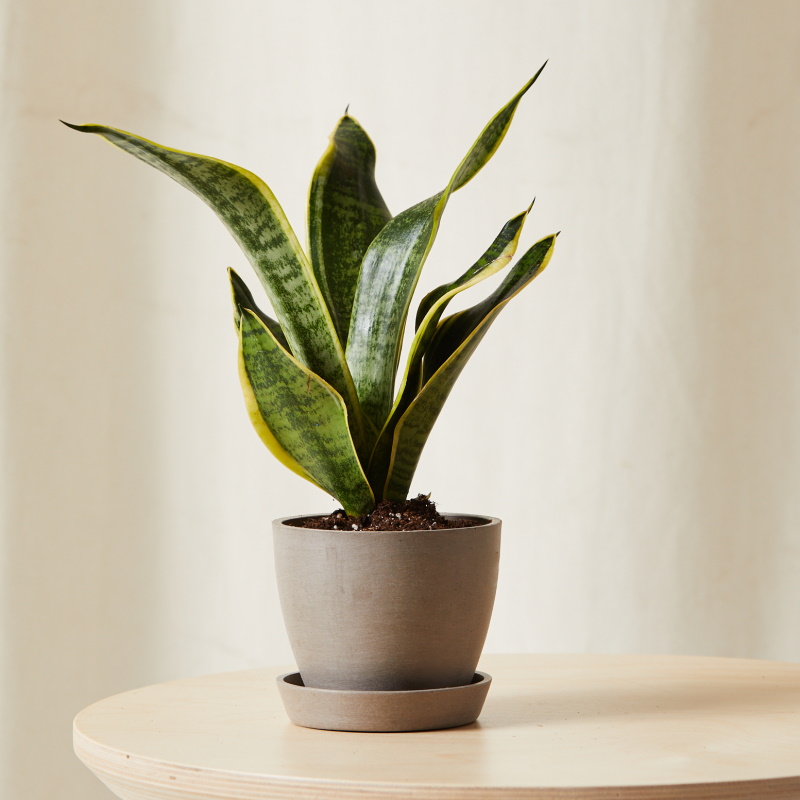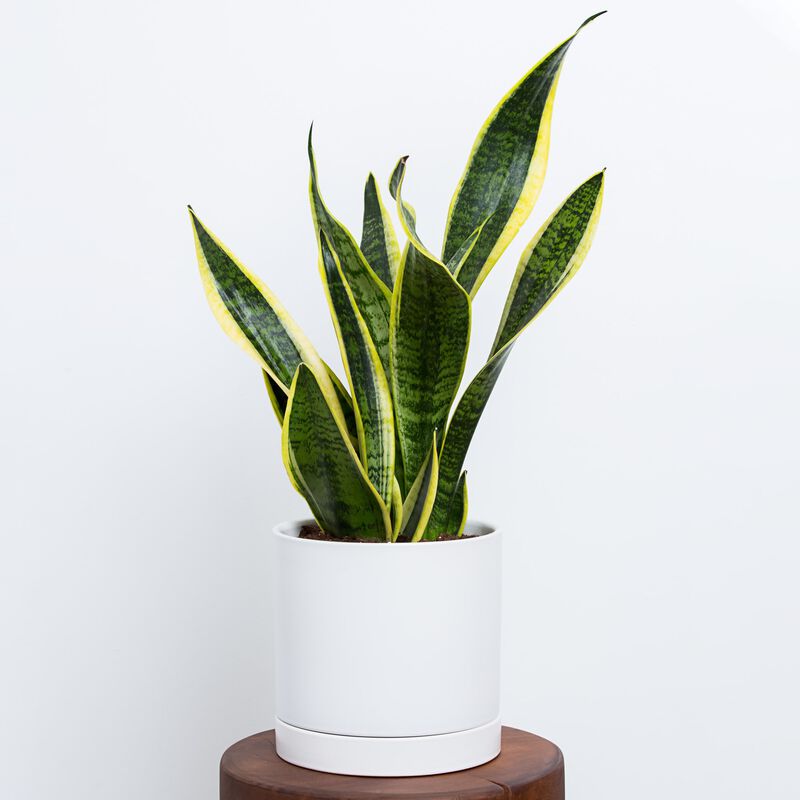How to care for a snake plant – 5 expert tips for this popular houseplant
Snake plants are perfect statement plants for beginners


Loved for their striking, structural foliage, snake plants are a classic favorite among the best indoor plants. Also known as mother-in-law's tongue and Dracaena trifasciata, these beautiful houseplants have slender, succulent-like foliage with patterns reminiscent of snake skin.
Native to west African tropical climates, these plants have sword-shaped leaves that can reach up to two meters on average. Although, there are smaller varieties that only reach around 20 inches tall or less, such as Dracaena trifasciata 'Twisted Sister.'
They have a unique appearance that can add a bold statement to your interiors, while being easy indoor plants and not needing much attention. With just some essential care, you can keep your snake plant happy for years. Here's our care guide for snake plants with tips from experts to keep them thriving for longer.
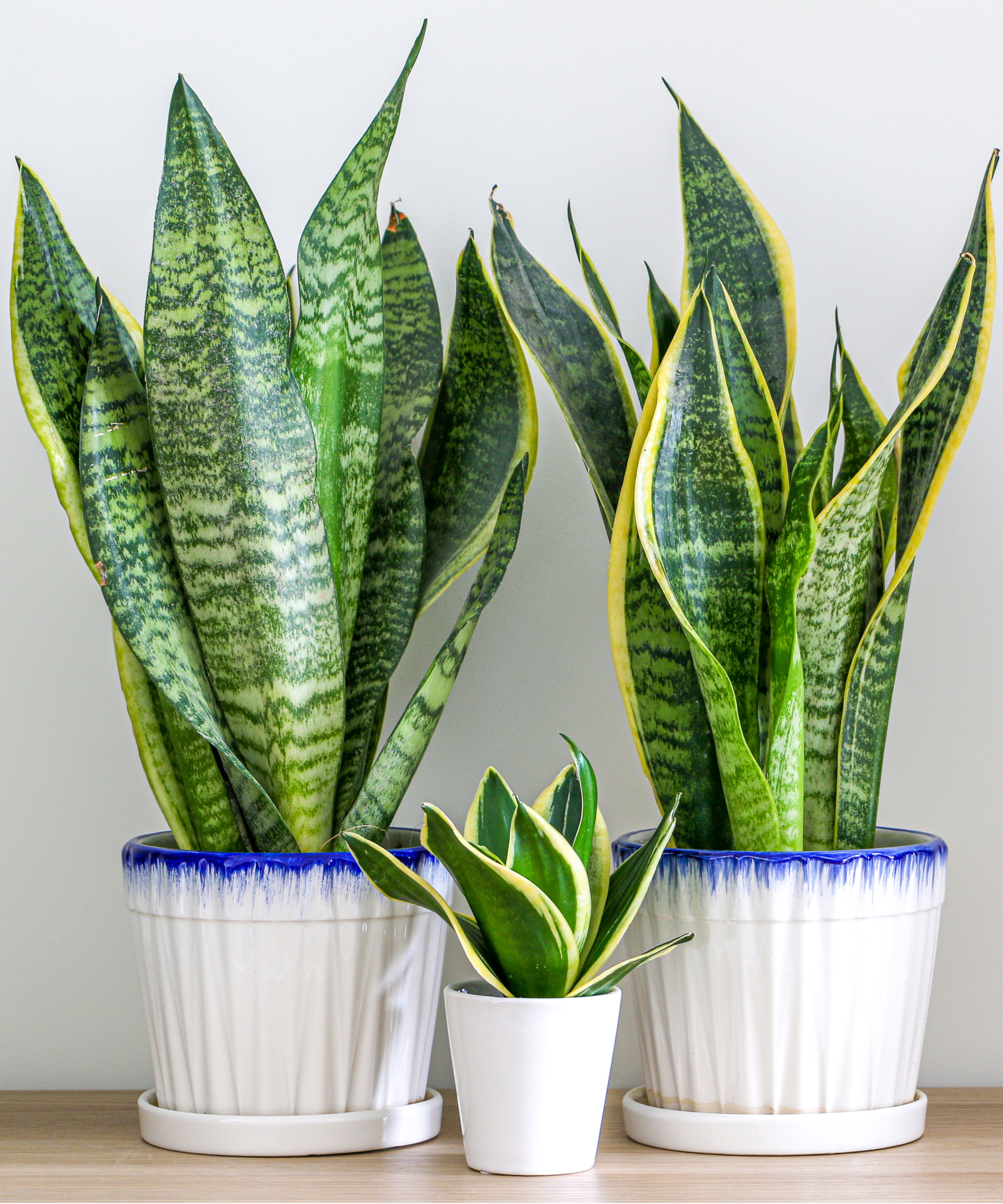
5 expert tips for snake plant care
If you're after a low-maintenance indoor plant that can green up your space and make a bold statement, a snake plant might be the ideal plant for you. We've spoken to experts to find out how to keep yours looking its best.
How much light does a snake plant need?

One of the things that make snake plants so sought-after is the fact that they can tolerate low-light positions.
'Often mistaken as low-light loving plants, these plants are merely low-light tolerant,' says Jeannie Psomas, plant expert and owner of The Plant Lady: San Francisco. 'They will survive in low light quite well for a few years but ideally they would love to be in a bright spot with gentle sun,' she adds.
While they do thrive with lots of bright, natural light, you can safely place your snake plant somewhere a bit shadier. Although, it is a good idea to avoid too much darkness as it could lead to your snake plant foliage drooping and you may not see much new growth.
Design expertise in your inbox – from inspiring decorating ideas and beautiful celebrity homes to practical gardening advice and shopping round-ups.

Jeannie Psomas owns The Plant Lady: San Francisco, an indoor plant shop located in San Francisco, California which caters to collectors and hobbyists alike. With a strong emphasis on plant science and education, Jeannie's philosophy is that anyone can grow gorgeous plants indoors.
How often should you water snake plants?
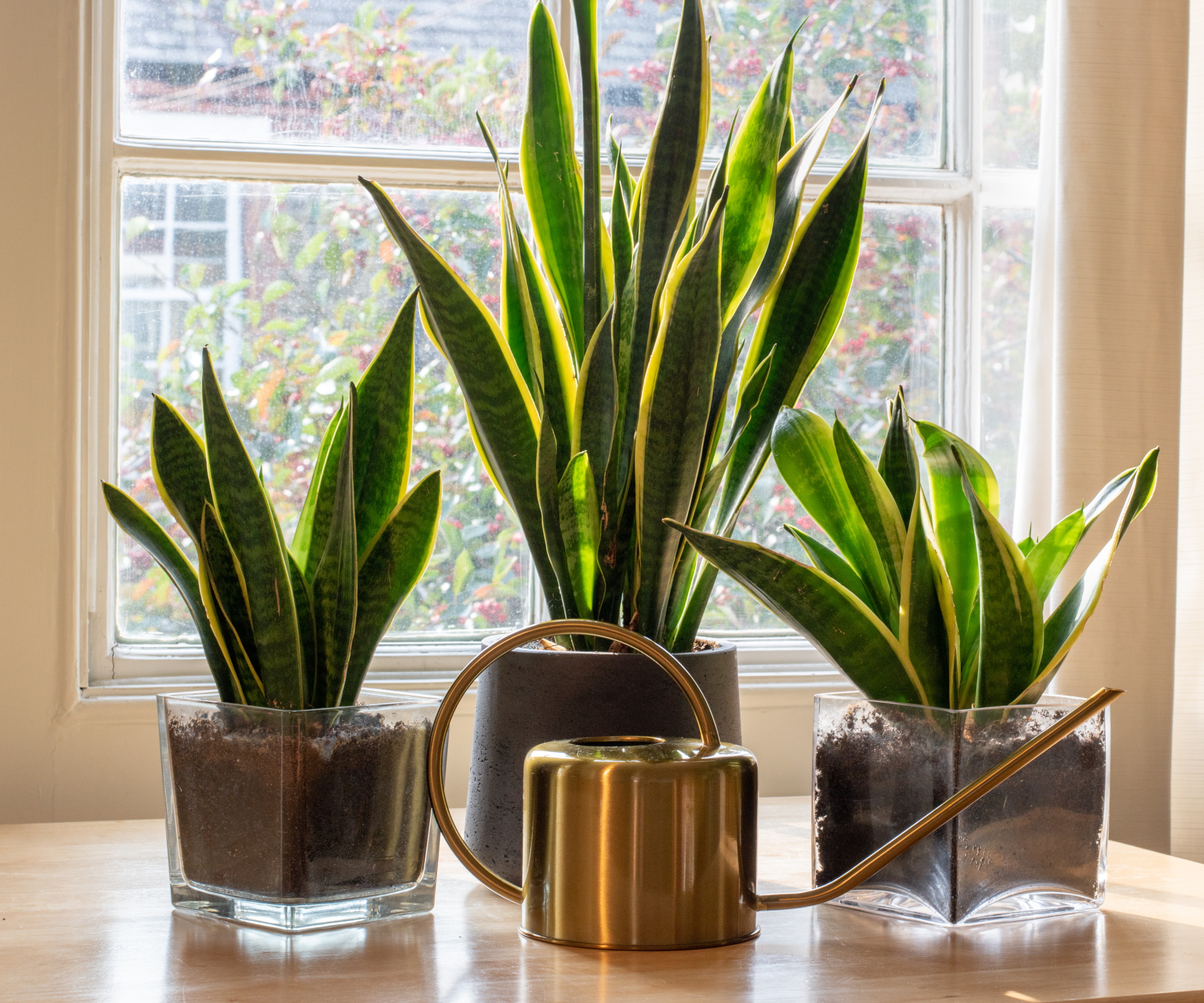
One of the biggest common indoor plant mistakes that kills snake plants is overwatering. These plants don't mind neglect and can retain water well, so you don't need to worry about watering your snake plant too frequently.
'Snake plants prefer that their soil dries out almost completely between watering and can tolerate a light watering every few weeks,' says Diane Kuthy, the founder of How To Grow Everything.
'One trick to know if you snake plant needs water is to dip your index finger about two inches into the soil to check for dryness. If the soil is still moist, do not water. If the soil feels dry, then give your plant a watering to moisten the soil,' she adds.
You can use a water meter, like this moisture meter from Amazon, to help monitor your snake plant's moisture levels.

Diane Kuthy is the founder and lead plant expert at How To Grow Everything, a collection of comprehensive grow guides for every plant and vegetable. Diane has over 10 years of gardening experience and she currently manages a 5-acre farm, a four-season greenhouse, over 50 perennial fruit and vegetable varieties, and a large indoor plant conservatory.
Where should you keep snake plants?
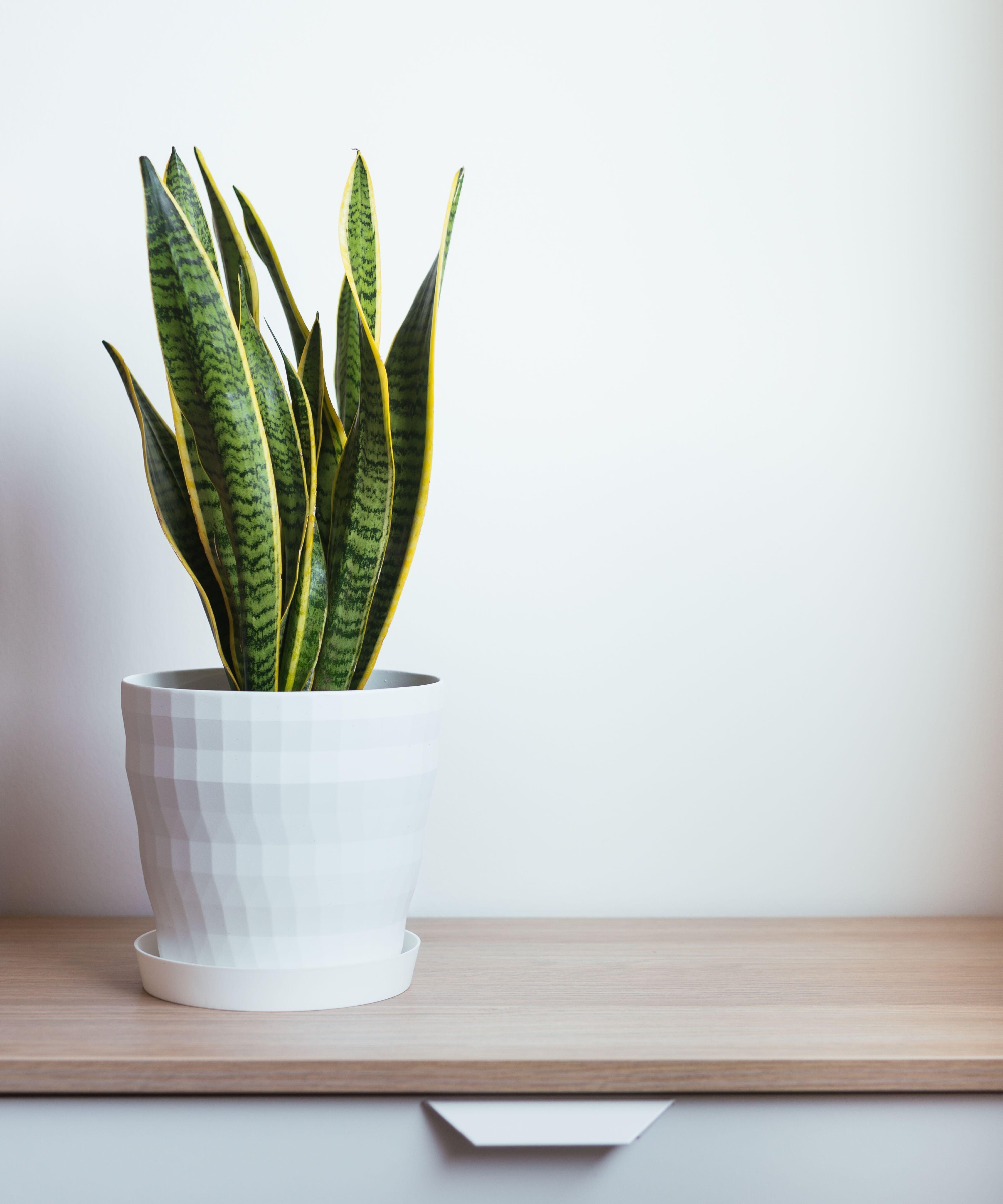
Like other tropical houseplants, snake plants enjoy higher humidity levels. As a result, they will appreciate living in a humid area of your home and do well as bathroom plants.
'I have a few snake plants and the happiest plants are the ones near sunny windowsills in my kitchen and bathroom,' says Diane
'Snake plants do prefer a higher than normal humidity, which is why a sunny bathroom is a great location. However, they are not too picky and can live healthy lives in rooms with drier conditions,' she adds.
It's best to just keep checking if your snake plant is happy in its location. If you notice signs of stress, such as drooping and or turning yellow, it might be a sign to move your snake plant elsewhere.
You can also help to increase humidity wherever your snake plant is, such as with this mister from Greendigs or humidity tray from Amazon.
It can also be a good idea to place snake plants out of reach of curious pets, as experts note snake plants are toxic to pets.
How do you stop snake plant leaves looking dusty?
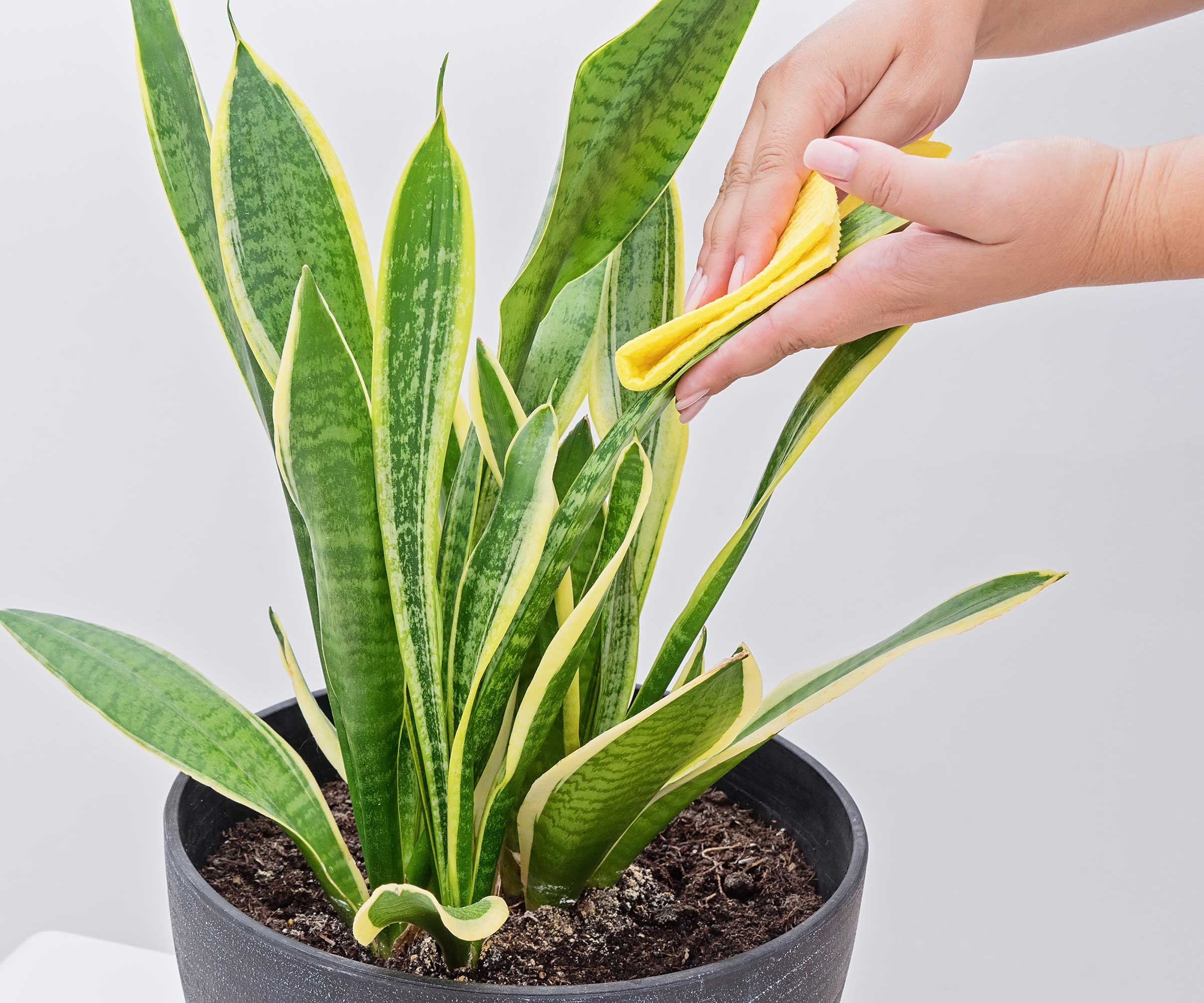
It's not uncommon for houseplants with larger foliage to capture dust on the surface of their leaves. While it's harmless and doesn't hinder the health of plants, it can make them appear duller and reduce the vibrancy of their foliage.
But there's an easy fix to this - you can clean houseplant leaves easily.
'To keep their leaves looking shiny and beautiful, simply take a lightly moistened cloth and gently clean their leaves when you notice dust or dirt accumulating on the plant,' says Diane
'This is almost purely for aesthetics and not something that you have to necessarily worry about,' she adds.
Some plant parents also use things like coconut oil, like this coconut oil from Walmart, to make snake plant leaves look glossy.
Should you repot snake plants?

Another reason that snake plants are ideal for beginners is that they are slow growing and won't outgrow their current container too quickly.
Although, there will be signs that your snake plant needs repotting and is desperate for a new home.
'Snake plants are slow growers and can live for a long time in the same spot without needing to be moved to a new pot,' says Diane. 'If you have a particularly aggressive snake plant that has outgrown its pot, indicative by roots bursting out of the top and bottom of their pots, then it is a good idea to repot,' she adds.
The best way to know if your snake plant needs repotting is by observing the roots and seeing if they have any more room to grow.
'It's a good idea to refresh the soil in potted plants every couple of years,' says Jeannie. Fresh potting mix will also boost growth for your snake plants by providing a fresh source of nutrients.
Shop snake plants online
FAQs
Can you propagate snake plants?
You can propagate a snake plant quite easily by growing it from cuttings. This can be achieved either in soil or water. Using clean tools, take cuttings of healthy leaves at the base of the plant. You can then either place it in water and keep it in a bright spot, or propagate it straight into soil with a well-draining potting mix. By keeping your cuttings well-watered and warm, you will help it to develop roots and it will soon be ready to plant up. After around two months, you should see new shoots emerge.
How do you prune a snake plant?
It's a good idea to prune a snake plant if it has foliage that looks worse for wear. If the leaves are yellowing or becoming a bit unruly, you can take clean pruning shears and snip them away. Overwatering and insufficient light are common causes for failing snake plants, so it's a good idea to readjust growing conditions once you have finished pruning. If you remove any healthy leaves to keep your snake plant shapely, you can propagate them and multiply your snake plant collection.
Bold and bright, snake plants are a classic to add to your houseplant collection. They aren't fussy and will stay quite happy with minimal care. These plants are also known to help with a good night's sleep and are among other air cleaning plants that can leave your home feeling fresh.

Tenielle is a Gardens Content Editor at Homes & Gardens. She holds a qualification in MA Magazine Journalism and has over six years of journalistic experience. Before coming to Homes & Gardens, Tenielle was in the editorial department at the Royal Horticultural Society and worked on The Garden magazine. As our in-house houseplant expert, Tenielle writes on a range of solutions to houseplant problems, as well as other 'how to' guides, inspiring garden projects, and the latest gardening news. When she isn't writing, Tenielle can be found propagating her ever-growing collection of indoor plants, helping others overcome common houseplant pests and diseases, volunteering at a local gardening club, and attending gardening workshops, like a composting masterclass.

